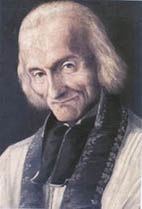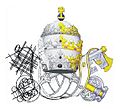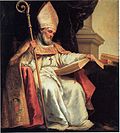Portal:Catholic Church
Introduction The Catholic Church (Latin: Ecclesia Catholica), also known as the Roman Catholic Church, is the largest Christian church, with 1.27 to 1.41 billion baptized Catholics worldwide as of 2025. It is among the world's oldest and largest international institutions and has played a prominent role in the history and development of Western civilization. The Church consists of 24 sui iuris (autonomous) churches, including the Latin Church and 23 Eastern Catholic Churches, which comprise almost 3,500 dioceses and eparchies around the world, each overseen by one or more bishops. The pope, who is the bishop of Rome, is the chief pastor of the church. The core beliefs of Catholicism are found in the Nicene Creed. The Catholic Church teaches that it is the one, holy, catholic and apostolic church founded by Jesus Christ in his Great Commission, that its bishops are the successors of Christ's apostles, and that the pope is the successor of Saint Peter, upon whom primacy was conferred by Jesus Christ. It maintains that it practises the original Christian faith taught by the apostles, preserving the faith infallibly through scripture and sacred tradition as authentically interpreted through the magisterium or teaching office of the church. The Roman Rite and others of the Latin Church, the Eastern Catholic liturgies, and communities and societies such as mendicant orders, enclosed monastic orders, third orders and voluntary charitable lay associations reflect a variety of theological and spiritual emphases in the church. Of its seven sacraments, the Eucharist is the principal one, celebrated liturgically in the Mass. The church teaches that through consecration by a priest, the sacramental bread and wine become the body and blood of Christ. The Virgin Mary is venerated as the Mother of God, and Queen of Heaven; she is honoured in dogmas, such as that of her immaculate conception, perpetual virginity and assumption into heaven, and devotions. Catholic social teaching emphasizes voluntary support for the sick, the poor and the afflicted through the corporal and spiritual works of mercy. The Catholic Church operates tens of thousands of Catholic schools, universities and colleges, hospitals and orphanages around the world, and is the largest non-governmental provider of education and health care in the world. Among its other social services are numerous charitable and humanitarian organizations. (Full article...) Selected article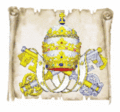
 The First Crusade was launched in 1095 by Pope Urban II with the dual goals of liberating the sacred city of Jerusalem and the Holy Land from Muslims and freeing the Eastern Christians from Muslim rule. What started as an appeal by Byzantine Emperor Alexios I Komnenos for western mercenaries to fight the Seljuk Turks in Anatolia quickly turned into a wholesale Western migration and conquest of territory outside of Europe.Both knights and peasants from many nations of Western Europe travelled over land and by sea towards Jerusalem and captured the city in July 1099, establishing the Kingdom of Jerusalem and other Crusader states. Although these gains lasted for less than two hundred years, the First Crusade was a major turning point in the expansion of Western power, as well as the first major step towards reopening international trade in the West since the fall of the Western Roman Empire.
Selected image
 The chapel of the Palace of Versailles, one of the palace's grandest interiors. Located in Versailles, France, Versailles is famous not only as a building, but as a symbol of the system of absolute monarchy which Louis XIV espoused. Originally the royal hunting lodge when he decided to move there in 1660, the building was expanded over the next few decades to become the largest palace in Europe. Louis XIV officially moved in 1682 and the Court of Versailles was the centre of power in Ancien Régime France until the royal family was forced to return to the capital in 1789. Selected biography
 Saint Peter Claver (in Spanish: Pedro Claver) was a Jesuit who, due to his remarkable life and work, become the patron saint of slaves, of Colombia and of African Americans. Although his detractors often accused Claver of lacking intelligence, boldness and self-confidence, he became a compassionate leader who lived out the commitment he added to his vows: that he was Peter Claver, forever a servant to the blacks. He insisted on seeing the slaves taken from Africa as his brothers in Christ and demanded that his fellow-Christians treat them as equals. As new slaves arrived, Claver ran out to meet them, carrying food and clothes to the living and removing the bodies of those who had died. He cared for the weakest first and took the sick to a nearby hospital he had built. Using natives as interpreters, he then began sharing the Gospel with all who would hear. Having won their good will, he instructed and baptized them into the Faith. Did you know...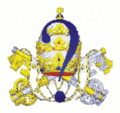
Related portalsFeast Day of August 4
Catholics note his saintly life, mortification, persevering ministry in the sacrament of confession, and ardent devotion to the Blessed Virgin Mary. He was canonized in 1925 and his feast day is August 4. He is the patron saint of parish priests. (Full article...)
Selected quote

News
SubcategoriesTopics
The Holy Bible:
Particular churches (grouped by liturgical rite):
Things you can do
External resourcesWikiProjectsAssociated WikimediaThe following Wikimedia Foundation sister projects provide more on this subject:
Discover Wikipedia using portals |




